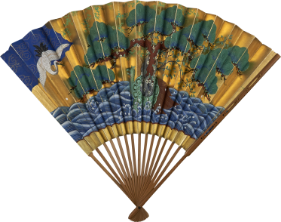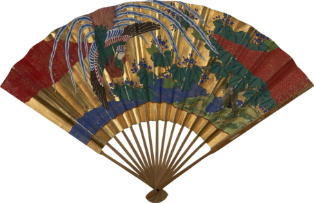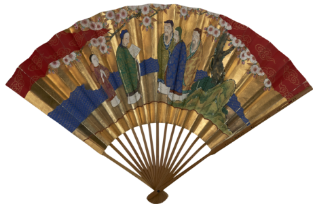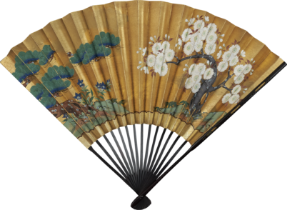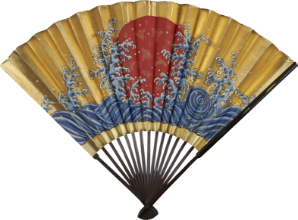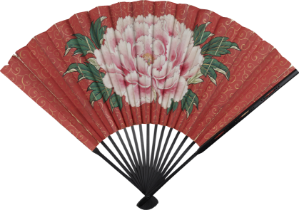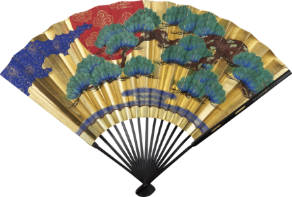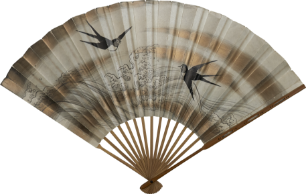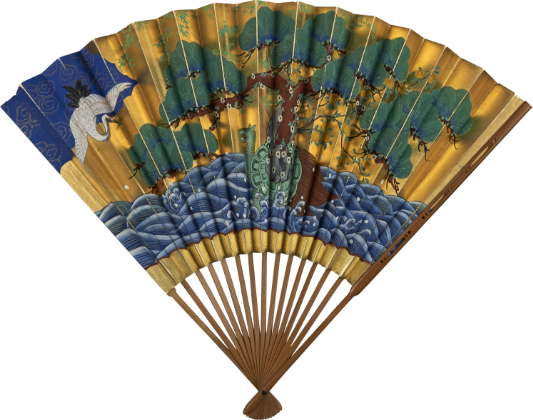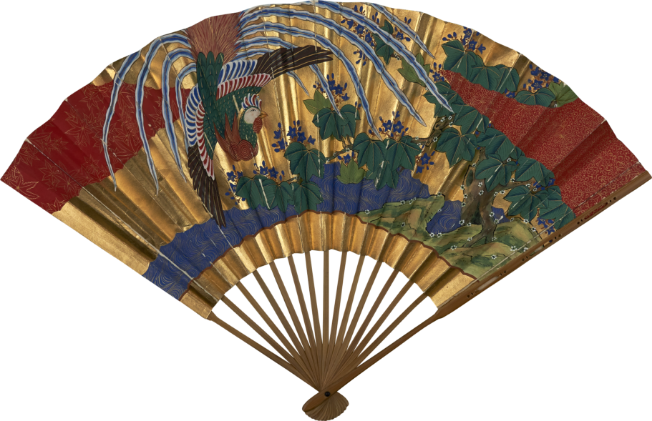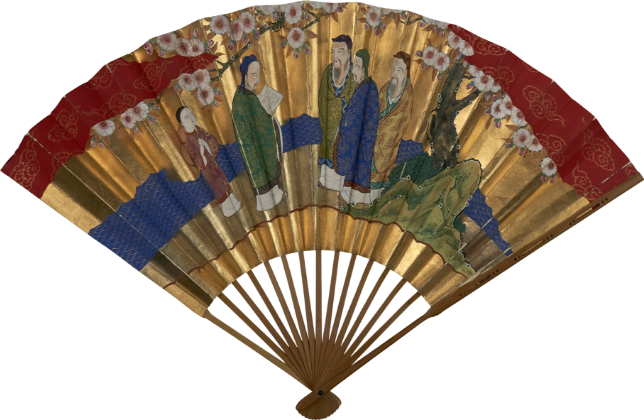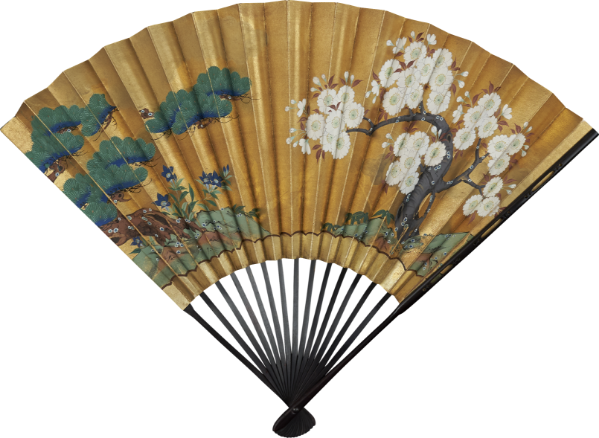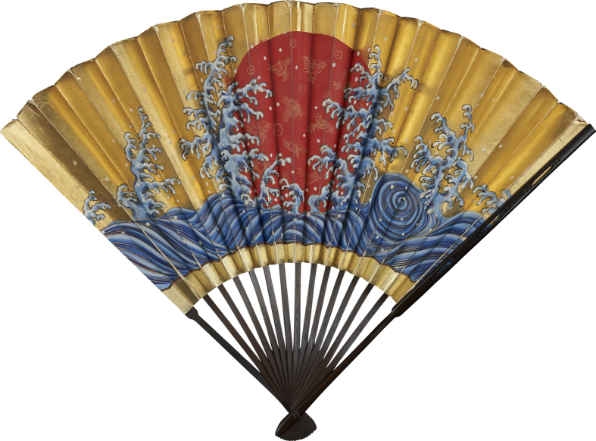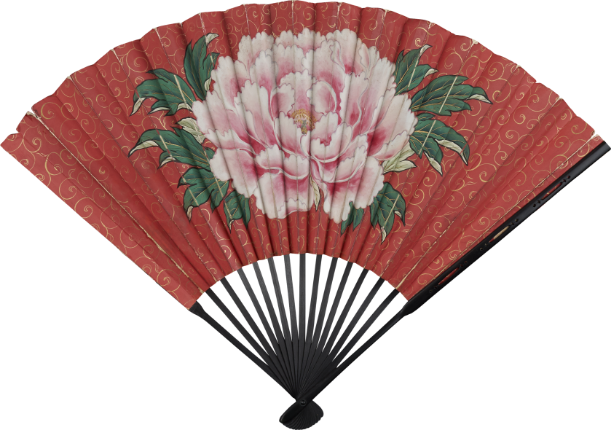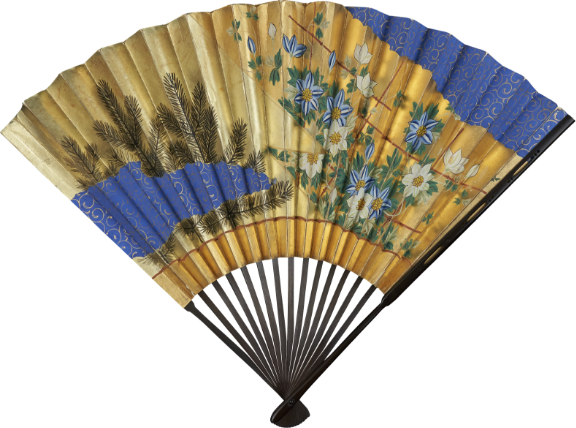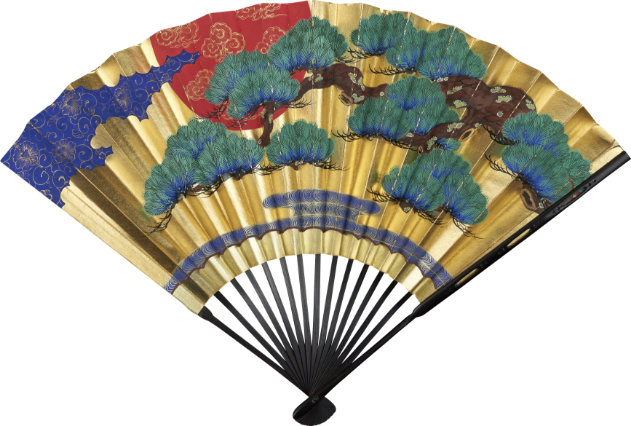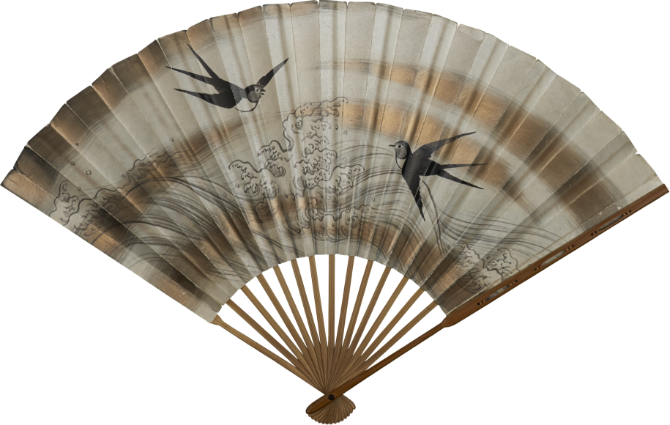
Noh Accessories and
Large Theatrical Props

Noh Accessories & Large Theatrical Props

Noh Accessories
Swords, fans, and crowns
indicate a character’s detailed feature and status.In addition to the noh masks and garments, various accessories are used to create the image of a noh character.
For instance, in the past, swords were part of standard male attire. Aristocrats wore decorative swords (shin no tachi), samurai used long swords (tachi), and commoners carried short swords (kogatana).
Headwear (kanmuri) include court caps indicating rank; headdresses with figures of cranes, turtles, and herons which represent the character; headdresses sporting dragons and foxes that stand for messengers of gods; headpieces with a tiger which symbolize beasts; and crowns with dangling ornaments (tenkan) signifying celestial maidens.
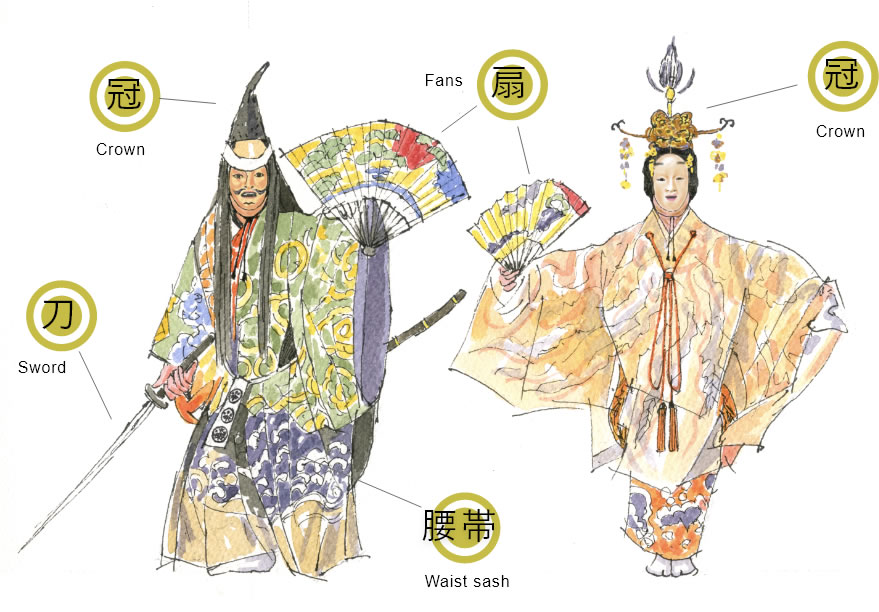

- Fan
- The fan is an essential prop in noh, with different types used by different characters.
In the past, fans were an accessory of the aristocracy. In noh, the fan serves an important function as a tool for multiform expressive purposes. Not only is it used during dances, but it can also be employed to stand in for other things, such as a cup, a sword, a brush, or a poem card. At times, it signals the feelings of the character, while at other moments it evokes a natural phenomenon, like the wind or waves.
The many different paintings on the fans also differ according to the play and character.

- Noh Accessories
-

- Crown of Chinese phoenix
(Hoo Tenkan)
- Crown of Chinese phoenix
-
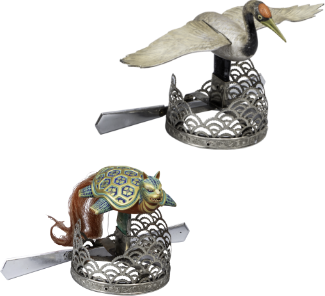
- Crowns with figures of a crane
and a turtle
- Crowns with figures of a crane
-
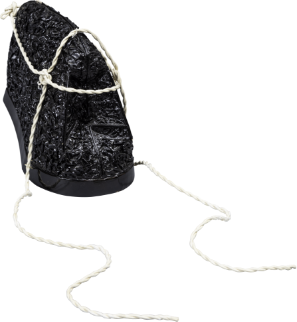
- High headdress (Okina eboshi)
-
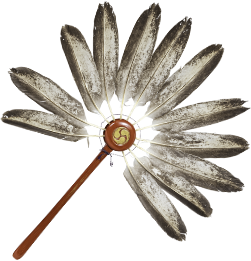
- Feather fan
-
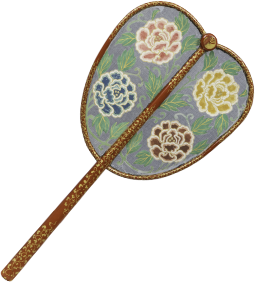
- Gourd-shaped fan
-
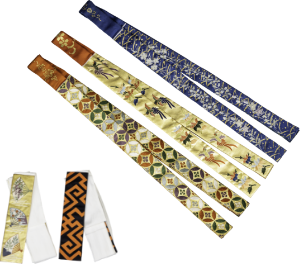
- Waist sash
Large Theatrical Props Tsukurimono
The role of tsukurimono
Noh is performed on a bare stage, but sometimes uses large props, known as tsukurimono.
Noh has no sets or backdrops depicting background scenery, such as those used in modern theatre and kabuki. Rather, the scene is expressed through symbolic structural frameworks only to the extent that is necessary for the staging of the play and the acting.
These structures are tsukurimono (“built objects”), constructed mostly out of bamboo and cloth. As a rule, tsukurimono are built just before the performance and disassembled after it is over.
For instance, boats are frameworks made of bamboo wrapped in strips of white cloth and large enough for three or four people to ride inside. The person in the boat who holds a bamboo pole is the captain, and the audience imagines that he is rowing along a river or on the ocean. Again, even if there is no boat, an actor coming on stage holding just an oar may cause the audience to understand the intended setting.

- Tsukurimono
-

- Dojojibell
-
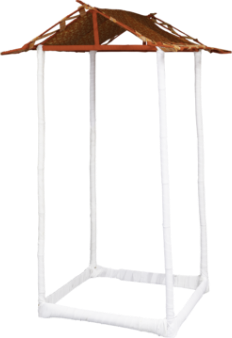
- Hagi hut
-
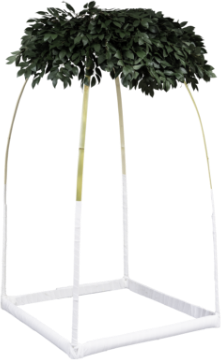
- Mountain or mound
-
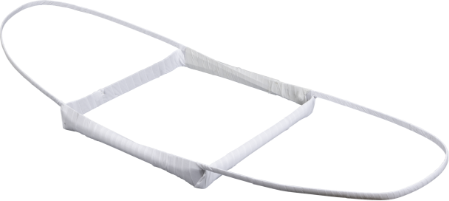
- Boat
-

- Oxcart used for cherry blossom viewing


